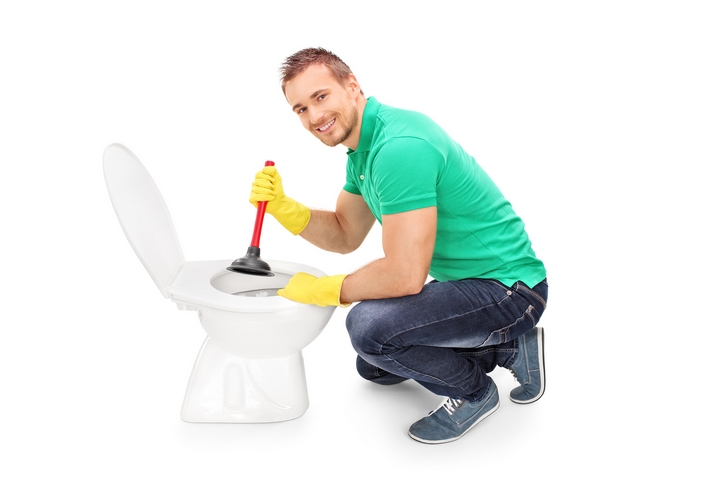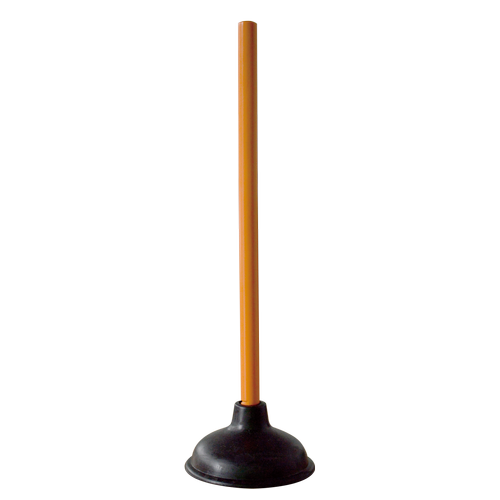Ways to Effectively Utilize Plunger and Drain Cleaner: Professional Tips
Ways to Effectively Utilize Plunger and Drain Cleaner: Professional Tips
Blog Article
Almost everyone is bound to have their own perception on the subject of Tips on How to Effectively Use a Plunger.

Introduction
Appropriate upkeep of family drains pipes is crucial for preventing clogs and guaranteeing smooth water flow. One of the trick devices in every house owner's toolkit is the plunger, together with different drain cleaners made to take on persistent clogs effectively. This post checks out how to utilize plungers and drainpipe cleaners properly to keep your drains pipes streaming freely.
Area 1: Comprehending Bettors
Sorts of Plungers
There are a number of sorts of plungers readily available, each developed for various types of drains and obstructs. The most typical kinds include cup bettors, flange plungers, and accordion bettors.
Just How Plungers Work
Plungers work on the concept of creating pressure and suction to dislodge obstructions. When appropriately used over a drain, they produce a vacuum that can pull out debris or break up obstructions.
Selecting the Right Bettor
Picking the right bettor depends on the type of drainpipe and the nature of the obstruction. Mug bettors are ideal for sinks and bathtubs, while flange bettors are much better suited for commodes as a result of their layout.
Usual Blunders with Bettors
Staying clear of these errors makes sure efficient plunging: improper seal around the drainpipe, insufficient force, and not clearing bordering particles.
Section 2: Using Plungers Properly
Preparation
Prior to diving, guarantee the bettor covers the drain entirely and forms a limited seal. Clear any type of noticeable debris around the drain opening.
Technique
Begin with gentle diving motions to build suction. Rise stress slowly, utilizing a steady rhythm. Repeat as necessary until the drainpipe removes.
Troubleshooting Tips
If diving does not function, try changing the seal, using petroleum jelly for a far better seal, or using a different type of plunger.
Area 3: Understanding Drainpipe Cleansers
Types of Drainpipe Cleaners
Drain cleaners can be chemical or enzymatic. Chemical cleaners use solid chemicals to dissolve obstructions, while chemical cleansers utilize natural enzymes to break down organic matter.
Just How Drainpipe Cleansers Work
Chemical cleaners react with obstructions to liquify them, while enzymatic cleansers break down organic products like hair and grease without harming pipelines.
Safety and security Considerations
Always use gloves and eye defense when utilizing chemical drainpipe cleaners. Guarantee ample ventilation and adhere to maker guidelines very carefully.
Eco-Friendly Alternatives
Consider using vinegar and cooking soda or enzyme-based cleansers for environment-friendly options that are safer for pipelines and the environment.
Area 4: Using Drainpipe Cleaning Company Effectively
Application Methods
Put chemical cleansers directly into the drainpipe opening. Permit them to work for the suggested time prior to purging with hot water. Enzymatic cleaners must rest over night.
Preventative measures
Avoid mixing different kinds of cleansers, as this can generate toxic fumes. Never ever make use of chemical cleansers in conjunction with a plunger, as spilling can happen.
Dealing With Stubborn Blockages
For relentless obstructions, consider using a pipes snake or calling a professional plumbing to prevent damages to pipes.
Verdict
To conclude, comprehending how to make use of plungers and drainpipe cleaners properly is vital for keeping healthy pipes systems. By picking the right tools and methods, homeowners can tackle small obstructions and avoid major pipes concerns down the line.
How to Use a Plunger to Unclog a Drain
The humble plunger is a simple yet effective tool for breaking clogs in sinks, tubs and toilets. This handy tool is easy to use. You can make the most of its power if you understand how it works. Ready to dive in? Here’s what you need to know.
Safety First!
Never use a plunger with drain chemicals. Water will splash as you work, and the chemicals can spatter, burning skin and eyes. It’s a good idea to use rubber gloves and wear safety goggles when you work on a clog.
Choose the Right Tool for the Job
Plungers come in two different styles. Sinks, bathtubs and showers require a cup plunger. Like its name suggests, the rubber end is shaped like a cup. Use a flange plunger on toilets. These plungers have a rubber funnel extending from the cup. A plunger needs to be big enough to cover the drain.
Ready, Set, Plunge!
Coat the rim: Coat the plunger rim with petroleum jelly. This helps make a better seal.
Block outlets: Hold a wet rag over nearby outlets such as the overflow vent or the drain in a second sink.
Release air: Insert the plunger at an angle into the water. Water will displace air in the cup. A water-filled cup is more forceful than one filled with air.
Keep the plunger upright: Hold the plunger perpendicular to the drain. Use fast, forceful strokes, but make the first stroke gentle. The first stroke can create a splash if the cup still contains air. Thrust the plunger 15 to 20 times.
Snap off the plunger: The final stroke should be a strong upward motion that ends when the plunger snaps off the drain.
Repeat the process: you may need to repeat this sequence several times. When the water drains away, your work is done. High-five! https://plumbernw.com/blog/how-to-use-a-plunger-to-unclog-a-drain/

Application Methods
Put chemical cleansers directly into the drainpipe opening. Permit them to work for the suggested time prior to purging with hot water. Enzymatic cleaners must rest over night.
Preventative measures
Avoid mixing different kinds of cleansers, as this can generate toxic fumes. Never ever make use of chemical cleansers in conjunction with a plunger, as spilling can happen.
Dealing With Stubborn Blockages
For relentless obstructions, consider using a pipes snake or calling a professional plumbing to prevent damages to pipes.
Verdict
To conclude, comprehending how to make use of plungers and drainpipe cleaners properly is vital for keeping healthy pipes systems. By picking the right tools and methods, homeowners can tackle small obstructions and avoid major pipes concerns down the line.
How to Use a Plunger to Unclog a Drain
The humble plunger is a simple yet effective tool for breaking clogs in sinks, tubs and toilets. This handy tool is easy to use. You can make the most of its power if you understand how it works. Ready to dive in? Here’s what you need to know.
Safety First!
Never use a plunger with drain chemicals. Water will splash as you work, and the chemicals can spatter, burning skin and eyes. It’s a good idea to use rubber gloves and wear safety goggles when you work on a clog.
Choose the Right Tool for the Job
Plungers come in two different styles. Sinks, bathtubs and showers require a cup plunger. Like its name suggests, the rubber end is shaped like a cup. Use a flange plunger on toilets. These plungers have a rubber funnel extending from the cup. A plunger needs to be big enough to cover the drain.
Ready, Set, Plunge!
Coat the rim: Coat the plunger rim with petroleum jelly. This helps make a better seal. Block outlets: Hold a wet rag over nearby outlets such as the overflow vent or the drain in a second sink. Release air: Insert the plunger at an angle into the water. Water will displace air in the cup. A water-filled cup is more forceful than one filled with air. Keep the plunger upright: Hold the plunger perpendicular to the drain. Use fast, forceful strokes, but make the first stroke gentle. The first stroke can create a splash if the cup still contains air. Thrust the plunger 15 to 20 times. Snap off the plunger: The final stroke should be a strong upward motion that ends when the plunger snaps off the drain. Repeat the process: you may need to repeat this sequence several times. When the water drains away, your work is done. High-five! https://plumbernw.com/blog/how-to-use-a-plunger-to-unclog-a-drain/

Do you enjoy reading up on Tips on How to Effectively Use a Plunger? Make a remark down the page. We would be happy to see your feelings about this piece. We are looking forward to see you back again soon. Sharing is good. Helping people is fun. Thanks for taking the time to read it.
Additional Information Report this page